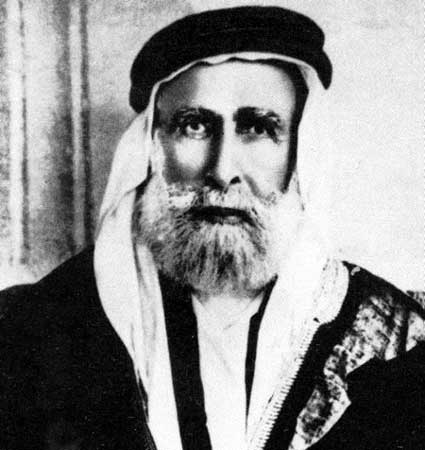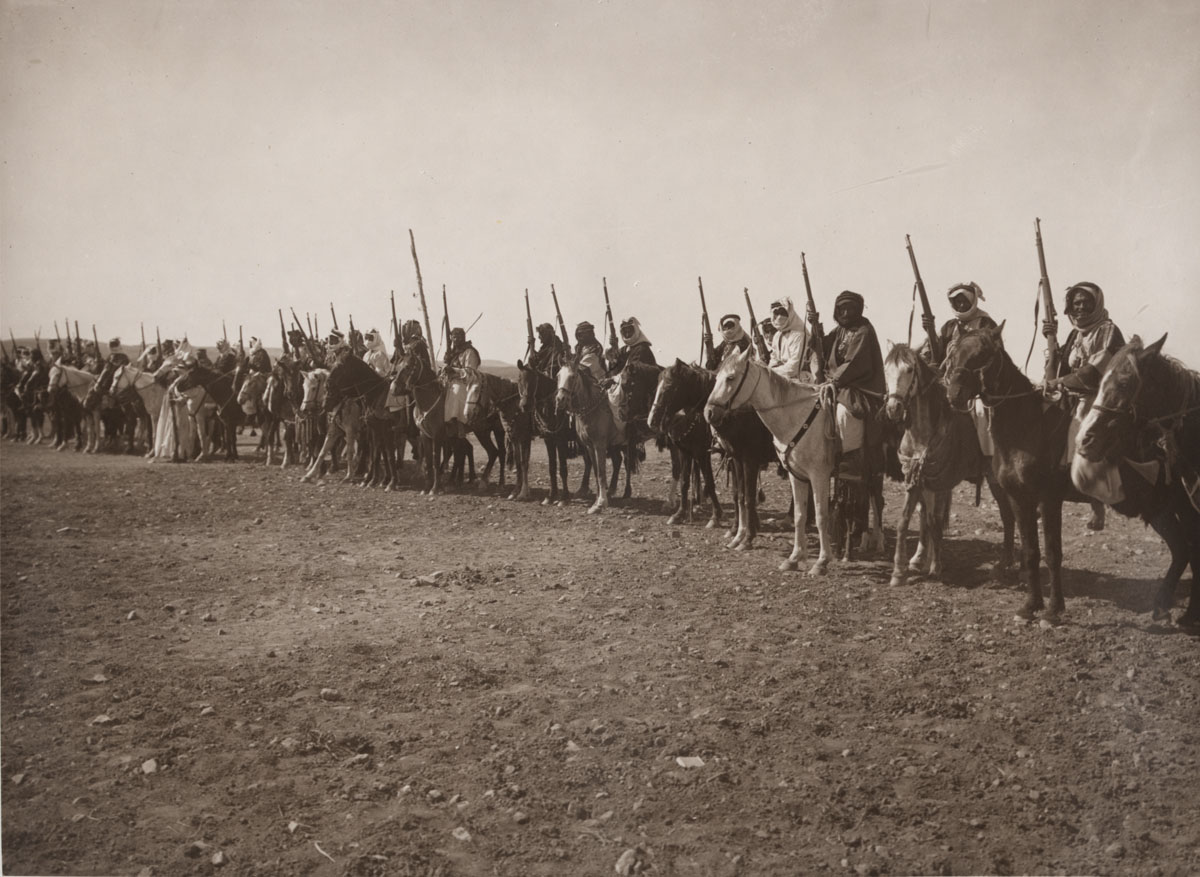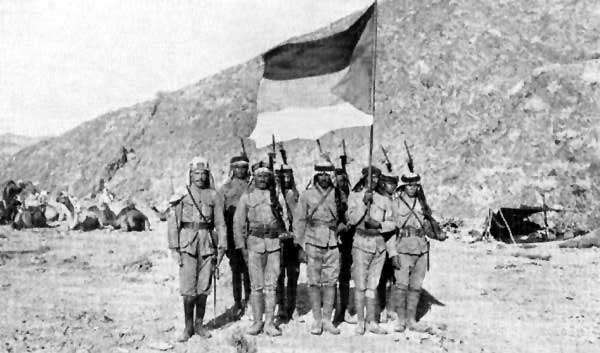Both Sides Eager for Fight; Both Weakened by War
Ottomans Launch Wave of Executions
Special to The Great War Project
(9-13 May) The British are making efforts to ignite an “Arab Revolt” in the lands of Arabia, led by Sharif Hussein, descendant of Mohammed, leader of the Hashemite clan, and keeper of the Sacred Mosque in Mecca.

Sharif Hussein of Mecca, leader of the Arabs, Keeper of the Sacred Holy Mosque.
Through a web of intelligence agents, the Ottoman leadership in these territories learns quickly of the British and Arab plans to defeat them.
They are quick to act, in deadly fashion. As early as August 1915 hangings of Arab plotters take place in Beirut. They are carried out in the dead of night, but the local population learns of them quickly, as do the people of Damascus and Jerusalem.
“These first hangings proved but the beginning of a reign of terror,”
,,,writes historian Eugene Rogan. Dozens more Arab activists are arrested, accused of plotting the overthrow of their Ottoman overseers. “Between their sessions before the military tribunal, the suspects were tortured to reveal the names of other members and the aims of their societies,” reports Rogan.
Repression worked, writes Rogan. Those Arab leaders that have conspired with Hussein and his sons “are broken and on the run.”
The repression continues into the spring of 1916, a century ago. Many from well-known Arab families are quickly found guilty of treason. Reports Rogan, “While everyone knew that treason carried the death penalty, many of those convicted came from prominent families and held high office, as members of parliament or in the Ottoman senate.
“It seemed unthinkable that the government would hang such prominent citizens like common criminals.”
But they did. “Without warning,” reports Rogan, “twenty-one men were hanged in the predawn hours of 6 May 1916 in the central squares of Beirut and Damascus.”

Arab tribesmen, enlisted for the Arab Revolt 1916.
One Turkish journalist who witnesses the hangings has sympathy as well as admiration for the courage of the condemned men. “Most of those hanged in Beirut,” he writes later, “were young nationalists. They went from their cells to the noose with their heads held high, singing the Arab hymn.”
Later that day the same journalist travels to Damascus, where seven more were put to death in similar fashion.
All this time the British and the followers of Hussain in Mecca are negotiating the terms of their alliance with the intent to launch an Arab Revolt throughout the Middle East.
But the tide of the war is shifting. With their defeats in Turkey and in Mesopotamia, the Arabs no longer see the British as the great imperial power they professed to be earlier in the war.
And on the Arab side, those leaders who claimed earlier that they could ignite an pan-Arab revolt in the length and breadth of the Arab lands, now appear far weaker, unable to spark the revolt in Syria and Iraq that the British desire.
“Arguably,” writes Rogan, “the alliance survived because the Hashemites and the British needed each other more in the summer of 1916 than ever.”

Arab rebels with Arab flag, designed by British.
Hussein still holds the upper hand in Mecca, but relations between Hussein and the Turks are at the breaking point. Hussein is aware that the Turks are fully prepared to arrest him, and possibly even murder him and his sons.
For their own reasons, both the British and the Hashemites were in a hurry to launch the revolt. They do not have long to wait.
